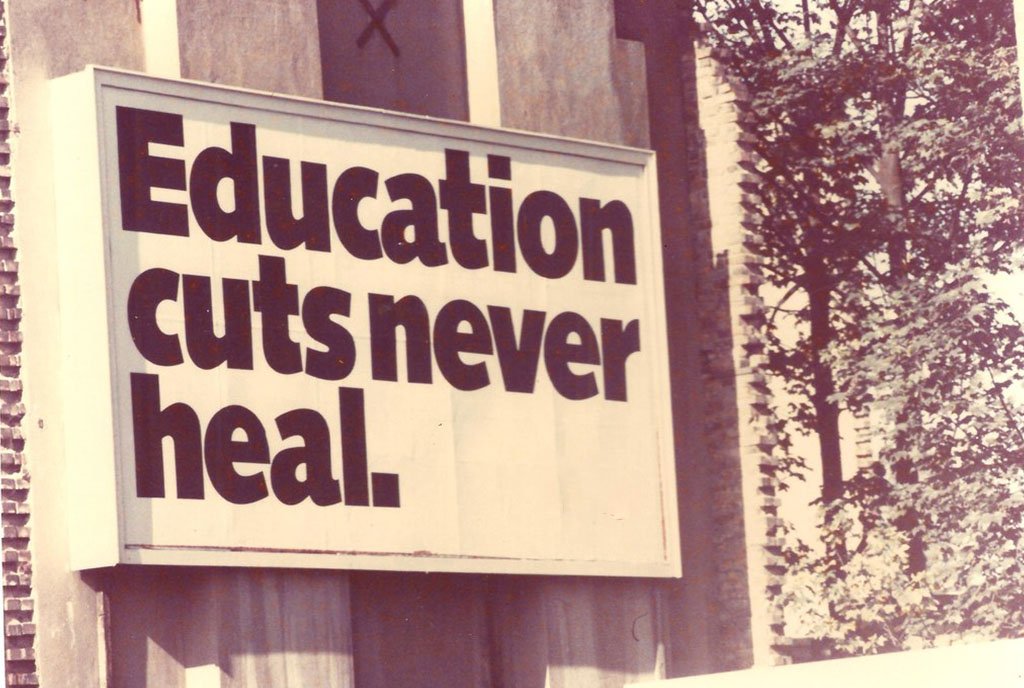
On Tuesday, April 8, a coalition of labor and civil society organizations, organized by Higher Ed Labor United (HELU), will hold demonstrations in more than 30 US cities. These demonstrations, called Kill the Cuts, will escalate over the next months as more and more campuses join in. The Kill the Cuts website has a map of where demonstrations will be held and lets people sign up to organize their own.
These are on top of hundreds of demonstrations expected the Saturday before, April 5, that Indivisible has helped organize; and a national Day of Action for higher education planned for April 17 by the Coalition for Action in Higher Ed.
The bottom line: Labor and civil society mobilizing against federal worker layoffs and program cuts by the administration of President Donald Trump is heating up.
Labor and civil society mobilizing against federal worker layoffs and program cuts by the administration of President Donald Trump is heating up.
These demonstrations aim to leverage the organizing power of the labor unions that represent higher education workers and their allies. Eight national labor unions are members of the national HELU coalition. Also supporting the action are Debt Collective, Stand up for Science, and HELU itself.
HELU started ramping up organizing well before the election, bringing major unions into a coalition that produced a Statement of Unity in October 2024. The need to strengthen labor power through this coalition—Labor for Higher Education or L4HE—was evidently important before Trump’s election. It has become even more vital since then.
A New Kind of Threat
The scale and scope of mobilization planned in April and beyond is unusual. Of course, this is motivated by the fact that the attacks facing by both workers and students in higher education today are different in kind from anything seen before.
To effectively oppose this level of attack requires deepening support and solidarity across sectors to build upon higher education’s considerable social and economic power.
In a publicly broadcast planning webinar on April 1, Todd Wolfson, president of the American Association of University Professors (AAUP), gave examples of the attacks: the abduction of students, the extortion of universities, the suppression of speech, and the elimination of life-saving clinical trials.
Grave as they are, these are short-term inflictions of pain, not the long-term wounds that could disable society indefinitely by interrupting the multi-decade pipeline of research, education, and public service which at its best enables colleges and universities to contribute to social wellbeing, community building, and overall national stability. Without an organized response, those long-term wounds are all but guaranteed.
Building the Movement
To effectively oppose this level of attack requires deepening support and solidarity across sectors to build upon higher education’s considerable social and economic power. Union members of L4HE represent a broad range of workers beyond higher education, including social services, state and local government, and healthcare, as well as workers in the retail, communications, and manufacturing sectors.
The movement is leveraging higher education’s existing strengths: Not only are colleges and universities sites of knowledge creation, they are also relatively highly unionized, with a boom in graduate student employee unionization occurring in recent years.
Sign up for our free newsletters
Subscribe to NPQ's newsletters to have our top stories delivered directly to your inbox.
By signing up, you agree to our privacy policy and terms of use, and to receive messages from NPQ and our partners.
Campus unions have had plenty of recent practice in demonstrations and strikes. Some of the strikes on campuses have been collective bargaining strikes, mostly about wages, housing and healthcare. Others have been the pro-Palestinian demonstrations, including encampments which in some cases brought police action and violent confrontations. Cornell University’s Labor Action tracker lists 74 strikes taking place in the last month, many of which were on campuses.
Mainstream coverage of these protests has tended to focus on elite institutions, like Columbia and Harvard. But higher education comprises a broad sector of society. It includes community colleges, adult continuing education, and four-year colleges and universities. Ownership is concentrated in public institutions; nonprofits play a significant role, although there are a number of for-profit institutions.
All told, over 5,000 higher education institutions are scattered across the country that collectively employ over 4 million people. They enroll over 18 million full- and part-time students. They spend over $700 billion a year or about 2.5 percent of national gross domestic product.
Resistance may be the watchword of the day, but a positive vision continues to animate the movement.
For diverse labor unions to form a coalition to respond collectively to political attacks on this whole sector is a new thing. No such response took place even during the McCarthy era in the 1950s, when people and organizations on the left faced extreme political attacks and repression, and most labor unions (many of which were, of course, under attack themselves) stood aside.
How the current struggle turns out remains to be seen. We are, quite obviously, in a period that will have deep, historical ramifications for US society and beyond. But what is equally clear is that workers and educational institutions have resources to resist. Whether this resistance proves decisive in turning back the current attacks will ultimately depend on the clarity of vision, the level of organization, and the degree and extent of solidarity that can be achieved.
Toward a Positive Vision
Resistance may be the watchword of the day, but a positive vision continues to animate the movement. HELU started organizing in 2020 during the pandemic, building on ideas from the presidential campaign of Bernie Sanders, Scholars for a New Deal, Debt Collective, and the national contingent (“adjunct”) faculty movement.
In the optimistic spirit of that time, HELU organizers wrote a vision statement of what higher education could look like. The key element of the platform is that “higher education is treated and funded as a social good and universal right.”
To accomplish this vision (which was rapidly endorsed by over 140 local labor unions) HELU committed to a wall-to-wall and coast-to-coast organizing strategy. This means bringing on local unions as formal members representing all workers essential to higher education: not just faculty, but clerical workers, technical workers, maintenance workers, librarians—staff of all kinds. This strategy acknowledges the social place of higher education as a public good, both in terms of what people learn there and how they learn it.
The current crisis has hit HELU halfway into its first year following its founding convention. HELU’s unique position—situated at the intersection of higher education and the labor movement—has made it an obvious hub for pulling peak unions together to support higher education workers.
But at the same time the challenge of engaging in wall-to-wall and coast-to-coast organizing persists. Organizers face a classic challenge of having to build the plane while flying it—and now doing so in an unprecedented storm.
Fortunately, the group has the last five years of organizing as a foundation to support its current work. The future remains uncertain, but in solidarity there is strength. Both in the flashier public mobilizations and the less sexy but essential organizing in between, the opportunity to build through the current challenges and advance a vision of higher education aligned with the public good lives on.











